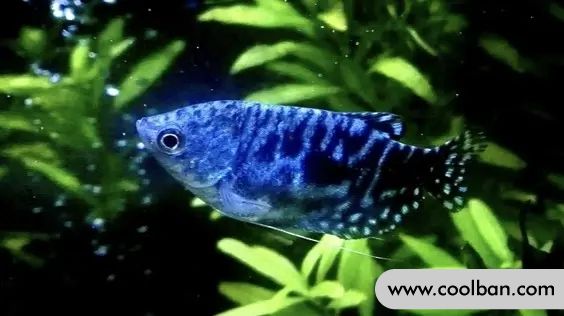How to raise Blue Man Arowana?
Blue Man Arowana is also unique in shape, with a bluish-gray body color with two irregular dark blue spots on the sides. The blue man dragon fish is oval in shape, with flat sides, shallow forked caudal fins, and long filamentous pelvic fins, so it is also called silk-footed perch. The sky blue color of Arowana is very popular. The water quality requirements for Arowana are not strict, and it is not difficult to raise.
Feeding knowledge of blue man arowana
Arowana has a bluish-gray body color with two irregular dark blue patches on the sides, usually connected to form a dark blue stripe. Ventral margin yellowish; dorsal, pelvic, and caudal fins evenly distributed with bright blue spots on a bluish-grey background. Before reaching sexual maturity, the male and female characteristics of Lamanosaurus are not obvious, and the sexes are not easy to distinguish. The morphological differences are obvious after sexual maturity.
The Blue Man Arowana is also relatively mild in temperament, but cannot be mixed with very small fish (such as lampfish), and can be mixed with most small to medium tropical fish. Moreover, the blue man dragon fish is very adaptable, and it is not difficult to raise.

Blue Man Arowana does not have high requirements for dissolved oxygen and can live in water with low oxygen content. When water lacks oxygen, it can surface to devour air. As an ornamental fish, in order to make the blue man arowana grow healthily and lively, it needs dissolved oxygen ≥4mg/L. The optimum temperature is 22-28°C, and the low temperature resistance is stronger than other tropical fish. Small amounts of food are available in Serve at 18°C. If the temperature drops slowly day by day, 14°C can survive for a long time; the lower limit of lethal temperature is 11.5°C.
Blue Man Arowana has a bright body color, and the young fish often go to the water to devour the air, which looks funny and cute; the fish has strong adaptability to water quality and is relatively cheap, and it is a species widely raised by tropical fish lovers all over the world. Adult fish generally swim slowly and are easy to give the impression of gentleness and elegance. This fish is actually quite aggressive. It will attack the weak in the same group as well as other groups with smaller individuals.

When feeding food to blueman arowana, it is also necessary to pay attention to the different feeding methods of juvenile and adult fish. However, artificial breeding of Arowana must pay attention to certain feeding requirements.
Blue Man Arowana is an omnivorous fish and can accept a variety of foods. Likes to eat aquatic food, such as cladocerans and so on. Also eat artificial food, even live small fry, small fish. For successful rearing, live bait such as cladocerans or small fry must be fed for more than 1 month prior to rearing.
The rearing operation of the blueman arowana is relatively simple, while the cultivation of larvae and larvae is more difficult. The reason is that the larvae of Arowana are significantly smaller than other tropical fish, with a body length of only more than 4 mm; the larvae of most tropical fish are more than 7 mm in length. , can generally open its mouth to feed newly hatched Artemia nauplii, and even feed directly on cladocerans such as guppies and Mary fish. Arowana larvae cannot feed on Artemia nauplii when switching to external nutrition, and need to provide small live bait.
